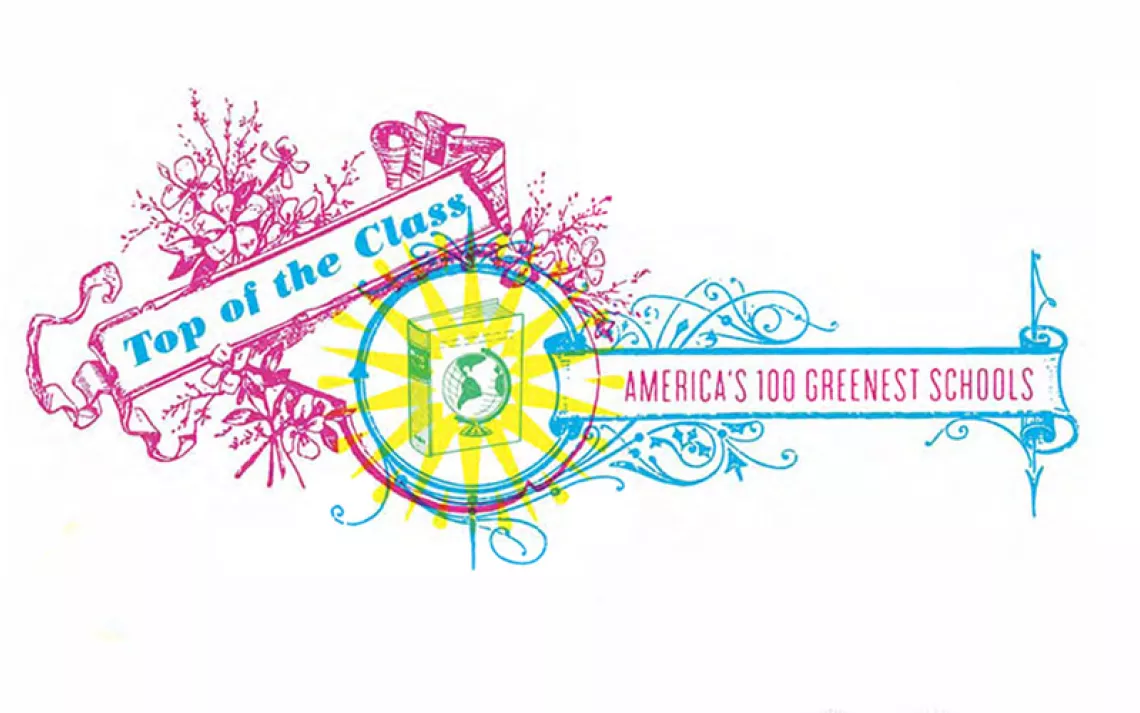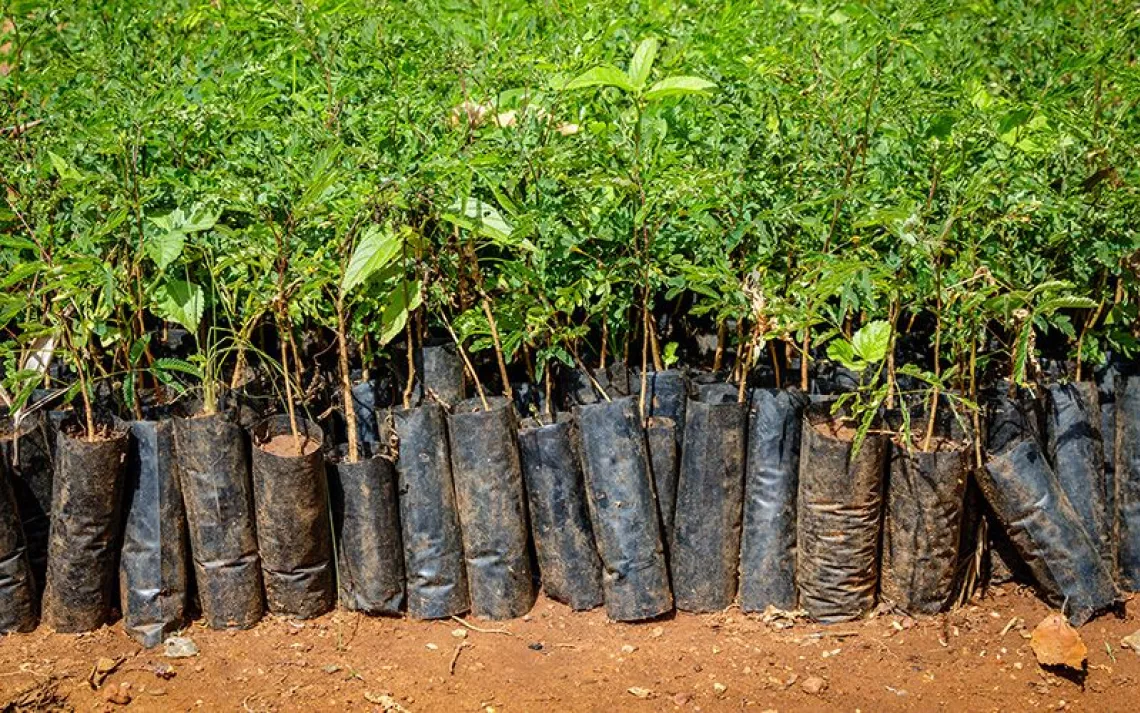Mindful of a Harmful Past, One College Supports Native Students
How UMN Morris prioritizes both Indigenous culture and sustainability

The campus at the University of Minnesota Morris used to host a very different kind of institution. In 1887, when the first buildings were constructed, it was the site of an American Indian boarding school.
Into the 1900s, the Catholic Church and the US government operated boarding schools across the country, separating Indigenous children from their families and stripping them of their Native culture. English was force-fed; Native languages were forbidden. If there was any ambiguity in their mission, it is cleared by an oft-quoted speech from boarding school founder Captain Richard Pratt: “Kill the Indian, save the man.”
The Morris Industrial School for Indians closed in 1909, and the federal government transferred the lands and buildings to the state of Minnesota. In doing so, the federal government included a stipulation that the next educational institution built there would provide Native students free tuition.
The exact reason for the tuition waiver is lost to history, but Kevin Whalen, a Morris professor who specializes in Indigenous education, theorizes that it has its origins in treaty law. Many treaties between the US government and Native tribes contained provisions that the government would provide education in return for land. He said, too, that there were some who assumed the treaty waiver probably wouldn’t matter in the long run: Many in the US government at that time expected Native populations to disappear or die out.
When the US government transferred the lands to Minnesota, the University of Minnesota began operating an agricultural boarding school on the site. In 1960, the UMN Morris campus replaced the boarding school, and the tuition waiver requirement carried on.
Now, UMN Morris is a Native American–serving Nontribal Institution, a designation given to colleges that have more than 10 percent Native students. With the tuition waiver program still in place, nearly one-quarter of Morris students are Native American, far above the national average.

Now a Native American–serving institution, UMN Morris is built on the site of a Native American boarding school. | Photo by Kari Adams/UMN Morris
“For so long, education was used as a weapon to take people away from their communities and cultures and languages,” Sandra Olson-Loy, the vice chancellor for student affairs, says. “We recognize our obligation based on the lands we’re on, and we’re trying to provide education that lets people access their culture.”
Only Fort Lewis College in Durango, Colorado, which was also a boarding school once, has a similar program. Some states, like Maine and Oklahoma, have more recently instituted scholarship or tuition waiver programs specific for local tribes, but Morris and Fort Lewis are unique in their connection to the boarding school history.
Across the country, there is a stark gap in educational achievement for Native Americans. In 2016, only about 19 percent of Native American 18-to-24-year-olds were enrolled in higher education, according to a National Center for Education Statistics report. Their six-year graduation rate to complete a bachelor’s degree was 39 percent, the lowest of any ethnic group. In Minnesota, fewer than 10 percent of adults from the local Dakota and Anishinaabe communities have earned a bachelor’s degree or more.
Those local tribes are well-represented to Morris. Though the students represent 50 additional Native nations, most are from the Upper Midwest’s Anishinaabe (Ojibwe, Chippewa) and Dakota/Lakota/Nakota (Sioux) Nations.
At most colleges, Native students compose only about 1 or 2 percent of the student body, Olson-Loy says, and they can often feel “invisible.”
At Morris, the opposite is the case, with Native culture and languages taught and celebrated. Students can take Anishinaabemowin and Dakota Iapi language courses, and there is a Native American and Indigenous Studies major and minor. Each year, the school holds a traditional powwow celebration.

Each spring, students hold a traditional powwow, celebrating Indigenous culture with song and dance. | Photo by Hailey LaMont/UMN Morris
Kelsey Scares The Hawk, who graduated from UMN Morris in 2014, said that without the tuition waiver, she likely wouldn’t have been able to attend Morris. Her dad was a single parent, and she didn’t have a lot of financial support.
Before attending Morris, Scares The Hawk—who is Cheyenne River Sioux—did not grow up with any Native culture in her life. At Morris, she learned to bead and sew and got involved with the Circle of Nations Indigenous Association, becoming the CNIA co-chair her last year. Immersed in Native culture for the first time, she started learning about environmental assaults on Native communities across the country, following stories of pipeline projects and drilling controversies.
She also became interested in the campus’ sustainability efforts, which are woven nearly as deeply into the fabric of Morris as Native culture. The small, rural college is completely carbon neutral, sourcing all of its energy from wind turbines and solar arrays. Nearly all of the food waste is composted on site, through a project built by students a few years ago. While Morris is only now focusing on the interconnectedness of Indigenous culture and sustainable living, many alumni have found their way into careers serving tribal communities, advancing sustainability, or both.
Scares The Hawk switched her major several times, eventually landing on geology, and participated in a study abroad program in Brazil that was exclusively for Native American women studying the field. She also joined the American Indian Science and Engineering Society.
Creating a Native-serving institution on the site of a former boarding school does not come without challenges. Scares The Hawk says that she felt a disconnect between Native students raised in urban settings and those raised on reservations. In the broader school community, there was some stigma around the tuition waiver. Non-Native students didn’t always understand why Native students got free tuition, and many needed to be taught about Morris’s history as a boarding school. There is also re-traumatization that many Native students feel learning on land that was stolen from their ancestors, then used as a place to strip them of their culture.
Scares The Hawk helped educate her peers about these issues while she was at school, trying to mitigate the shame that many Native students felt about the government paying for their education. At the same time, she was learning about her own culture, non-Native students were often getting their first real exposure to Native culture.
Scares The Hawk also thinks that when she was at Morris, the connection between environmentalism and Native culture wasn’t often explicated. In her experience, the science and the culture were kept separate. Nevertheless, her exposure to sustainability measures at the environmentally minded school were life-changing. She now works in the Shakopee Mdewakanton Sioux community’s large-scale Organics Recycling Facility. She attributes her career path to her time at Morris and to the exposure to sustainability and Native culture.
“It made me realize that I wanted to contribute to a community,” Scares The Hawk says.
Now, Olson-Loy said, Morris is working to more openly tie together Indigenous culture and environmentalism. At an on-campus gallery, a We Are Water exhibit is opening, blending personal stories and scientific knowledge to educate viewers about Indigenous land stewardship.
To Olson-Loy, it is no surprise that so many alumni end up working in sustainability or serving tribal communities, or both. Native culture and environmentalism are “embedded” in everything that they do at the school.
“You get this stuff because you graduated from Morris,” Olson-Loy said. “It’s in the water here.”

At UMN Morris, Native student enrollment is steadily climbing, reaching a new high of 23 percent in 2019. | Photo by Kari Adams/UMN Morris
 The Magazine of The Sierra Club
The Magazine of The Sierra Club



